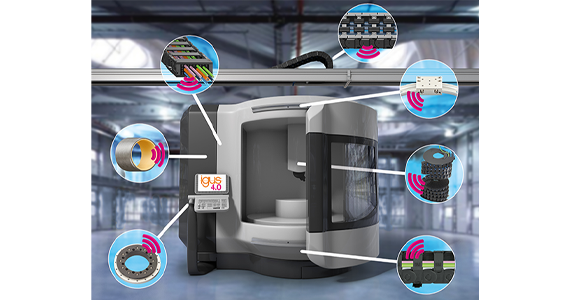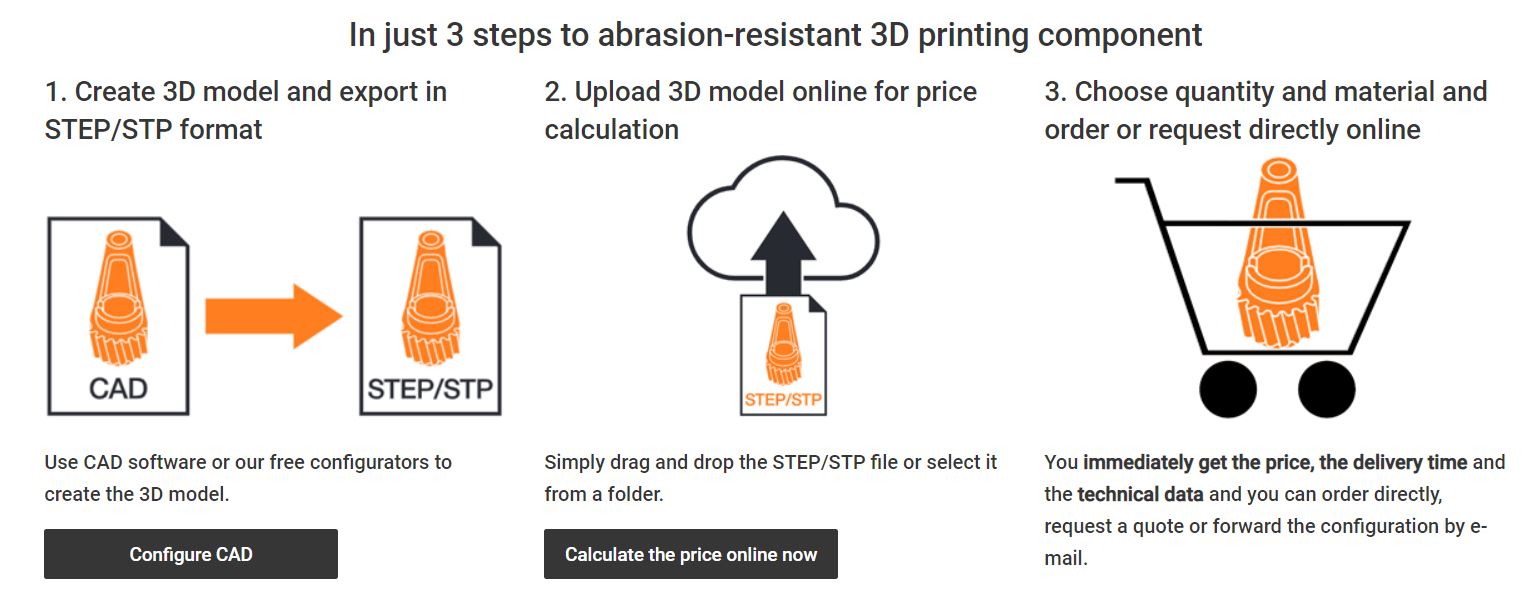igus, provider of specialized polymer components and material solutions, has announced that its researchers have developed a method of printing sensors into tribo-components such that they signal need for a replacement long before failure is expected to occur. The component can now provide a warning if overload is expected or if the wear limit is near, thus developing an inherent predictive maintenance property with its printed sensor layer. Called “isense”, the layer technology continuously measured for changes in electric resistance, and can be 3D printed using a specially developed electrically conductive material that adheres to tribological filaments or powders of the igildur material products family.
In 2014, the company had introduced the world’s first tribo filament for 3D printing, which claimed 50 times more wear resistance than traditional 3D printing filament materials. Its family of igildur materials are not only designed to significantly improve robustness, wear-resistance, and self-lubrication but also to accurately configure and exactly estimate service life for a component made of these materials. Igildur materials, which are also FDA certified for use in food, cosmetics and beverage applications, have been shown to reduce cost by 85% and manufacturing time by 70% for 3D printed plastic grippers as compared to traditionally used aluminum grippers. They also do not require lubrication or maintenance for continuous operation, are lighter in weight than other materials used for such applications, and can be 3D printed to meet the complex shape requirements of any design.
The service life of such parts can be accurately estimated using their free online tool, for parts such as plain bearings, spherical bearings, gears, cables, bar stock, slewing ring bearings, lead screw systems and more. The configurability and control over material composition and performance is possible as each igildur material is composed of a base polymer material, fillers and fibers, and microscopic solid lubricants. This brought an added advantage when Igus introduced specialized products for for fused filament fabrication and laser sintering: to print better performing, abrasion- and wear-resistant, moving parts made of polymer. Last year, we reported on how the company was looking to make high-temperature 3D printing more accessible and easy, which otherwise is notoriously difficult with materials such as PEEK, PEKK and PEI. It made openly available online the designs and files for a high-temperature 3D printer its R&D team had developed.
The isense technology can currently be applied to produce smart bearings, linear carriages, lead screw nuts, chain or cable systems, among others.
The use of components manufactured with such ‘smart plastic’ materials provides a way for users to automate predictive maintenance or build seamless Industry 4.0 connected networks, for individual components, locally, or at scale. This would reduce machine or operating downtime and provide a cost-effective, flexible 3D printing solution for predictive part maintenance. 3D printing with isense’s special material is possible using multi-material 3D printing the company has developed in-house. At the moment, the sensor technology can be applied in two use-cases: for potential overload detection and for wear limit detection. Typically, these signals are communicated via built-in LED lights or read-out display units connected to the components, indicating a need for replacement or preventive maintenance.
By using igus’ 3D printing service, smart components can be ordered within three days, in a cost-efficient way by businesses looking to incorporate affordable sensor technology into high-wear or use moving components or products. Currently, the company has launched its isense technology service and is beta-testing, offering free samples to select customers.
Such cost-effective solutions with broad scope for industrial applications are key to applying 3D printing for smart components, spare part supply chains, part repair or replacement. Not only can it be used to design and directly manufacture such parts, but also can be used in combination with digital twin technologies and integrated sensors, to make real-time predictive maintenance and performance optimization possible individual parts, as we have also seen for highly-specialized components with GE and Siemens. We have also seen 3D printed sensors built-in to parts or structures to measure and track performance. Previously, Optomec has demonstrated how it could directly 3D print strain sensors, using its Aerosol Jet Technology, onto turbine blades.
Subscribe to Our Email Newsletter
Stay up-to-date on all the latest news from the 3D printing industry and receive information and offers from third party vendors.
Print Services
Upload your 3D Models and get them printed quickly and efficiently.
You May Also Like
Consolidation in AM: How 2025 Is Shaping the Industry’s New Normal
The first half of 2025 has been marked by a clear shift in the additive manufacturing (AM) industry. Companies are no longer just focused on developing new tech by themselves....
Etsy Design Rule Change Reduces Selection of 3D Printed Goods
Online marketplace Etsy has implemented a rule change requiring all 3D printed goods on the site to be original designs. The update to the site’s Creativity Standards states, ¨Items produced using...
U.S. Congress Calls Out 3D Printing in Proposal for Commercial Reserve Manufacturing Network
Last week, the U.S. House of Representatives’ Appropriations Committee moved the FY 2026 defense bill forward to the House floor. Included in the legislation is a $131 million proposal for...
Transforming From Tourist to Native: Duro CEO Michael Corr Explains Why the Company Rebuilt its PLM Software on AI
In these early innings of the AI boom, many market analysts have expressed concern that AI spend has gotten too far ahead of the technology’s proven ability to deliver significant...





































